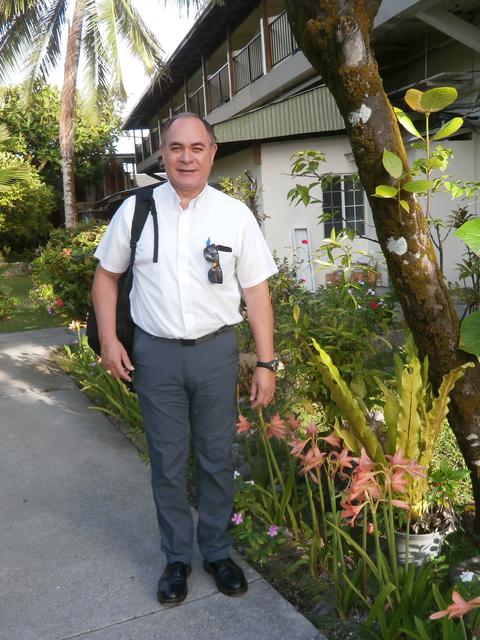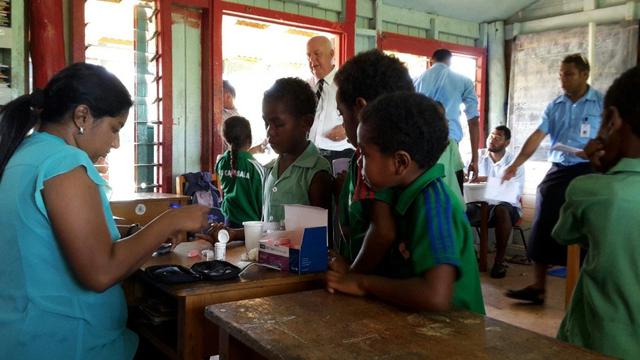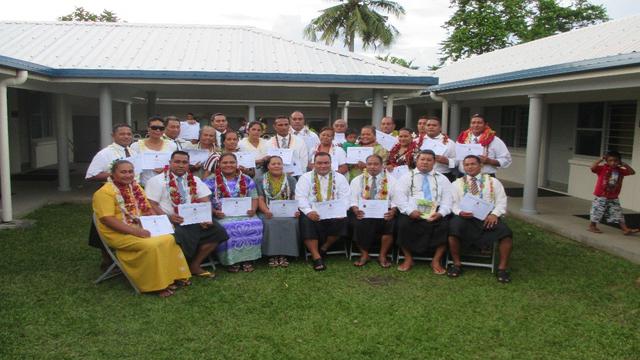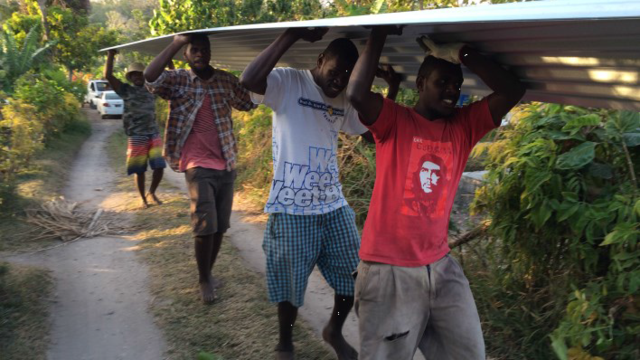Hans Sorensen, Pacific Area Welfare Manager for The Church of Jesus Christ of Latter-day Saints, is a man on the go.
He directs the efforts of more than 30 full-time missionaries and 10 employees as they work together to meet the humanitarian needs of the people of a 9,000 square mile area.

Mormon Newsroom sat down to talk with him about the humanitarian projects currently underway and the future projects in the planning stages.
MN: What are the biggest welfare challenges facing the people of the South Pacific?
HS: Health is certainly number one.
We see a high adult mortality, primarily from non-communicable diseases (NCDs). The key NCD culprit is diabetes. Over two thirds of all deaths can be traced to NCDs. Unfortunately, the Pacific area has some of the highest rates of diabetes in the world.
Coupled with adult mortality is infant mortality due in part to nutritional issues—undernourishment or malnourishment
We are also dealing with the problems associated with various addictions, including alcohol, drugs, and pornography.
I would say that second is domestic violence and abuse, particularly, aimed at women and girls.
Third, are the economic problems that stem from an over-reliance on payments coming from overseas to support the economy; a shortage of sustainable and affordable energy resources; and a lack of commercial enterprises to create a stable economic foundation.
Then, of course, we are concerned with how to provide a quality education for all, including resources and facilities; and finally, we have to deal with the ever-present threats and occurrences of rising sea levels, cyclones, the El Niño effect, and so on.
MN: How are you and your team tackling these complex challenges?
HS: In regard to diabetes, the teams are focused on working with governments, non-government organizations (NGOs) and churches to bring about change that will reduce the incidence of diabetes. We identify areas where the Church can lend its resources and help, and we work with Ministries of Education (MOEs) to support diabetes education and prevention through diet and exercise.

To help prevent domestic abuse, we provide courses on strengthening marriages and families within the Church.
To alleviate some of the economic problems, we teach our members principles of emergency preparedness and provident living and encourage them to put these principles into practice. We also teach principles of self-reliance and help create opportunities to help people help themselves, in particular through educational pathways, self-employment and better employment.
And finally, we can’t change the weather, but we are developing ties with Ministries of Foreign Affairs and Trade (MFAT) and NGOs, working with Massey University Psychology department and the Joint Centre for Disaster Research to establish a new focus on disaster preparedness.
MN: What progress has been made in the last 12 months?
HS: We have made significant progress thanks to all involved.
We have developed a Pacific-wide strategic focus on reducing the incidence of diabetes. We have met with Ministries of Health and other government officials in most of the Pacific nations and are working with them to help support and implement their diabetes strategies.
Specific welfare and humanitarian projects include: health testing programs, capacity-building of the local medical community, and food initiatives with a focus on growing local nutritious foods.
We have provided cooking instruction, nutrition education, diet, hygiene, sanitation, and physical exercise to improve the health of communities.
We have completed many clean water projects, wheel chair projects, and provided for good oral health through free dental clinics in Samoa and Tonga. We have donated many wheelchairs and mobility aids and have trained local technicians in proper wheelchair fitting.
In one year, LDS Family Services, using local facilitators, has held "Strengthening Marriage and Family" courses in Samoa, with over 2,000 graduates. The course addresses the problems and teaches methods to eliminate violence and abuse within families.

Meetings have been held with some MOE officials to address nutrition, diet and exercise within schools and communities. Plans are moving forward.
We have also conducted training sessions with school counsellors to prevent youth suicide and address behavioural health issues. Our goal is to increase awareness and help them identify symptoms early.
Ministries of Health know that the Church’s interest in health improvement is not a passing fad but that we are serious in our desire to help long-term.
Toward improving education, through our partnership with Furniture for Schools Trust, over 16 containers filled with good-quality second-hand school furniture, books and sporting equipment have been shipped to several Pacific Island schools. We have also provided materials for community projects of major school improvements.
Through our local Church leaders we are developing emergency response and preparedness plans in the event of disasters, including personal and family plans. This includes placing large storage containers full of emergency response materials, tools, and supplies in high risk areas.

Many of our teams in the islands are fully engaged with governments, NGOs and communities to bring about change, including appointments to various community groups.
MN: What’s next for 2016?
HS: There is plenty of work ahead, but we are making good progress.
Health-wise, we expect that 2016 will see more “significant” diabetes-related projects approved.
And we have plans to deliver more clean water, wheelchairs, and food initiative projects in the Pacific Area.
Church dental clinics in Tonga and Samoa are partnering with the local dental community to increase the level of expertise and skill available there.
The excellent self-reliance materials and courses on strengthening marriage and family the Church has developed, we hope to spread to other islands and to all who would like to participate.
One of our overarching goals is to avoid dilution of indigenous peoples’ resilience by focusing on sustainable projects rather than hand-outs.
Finally, we will continue to build closer ties with MFAT and Pacific economic ministries to identify sustainable economic development projects in which the Church could partner.
MN: How important is collaboration with governments, other churches and charities?
HS: The Church is not an island, therefore the Church needs as much support and interaction with governments, NGOs and other churches as they might need from us.
The Church has many strengths, but is mindful also of its limitations. Hence pooling the resources and strengths of others is mutually beneficial.
MN: What does this work mean to you?
HS: The work is joyful, much like Christmas, without wearing the red suit!
When you talk about job satisfaction, this is the ultimate work. Helping people help themselves for a better future is a gift few people have experienced or could receive adequate compensation for.
It is truly the work of the Lord.
MN: Why do you do it?
HS: It is enjoyable, for one reason. Discipleship is another.
Caring for the poor and needy or loving your neighbour through your actions is the second great commandment of the Lord.
MN: What role does your faith play in your work?
HS: Faith in Jesus Christ is fundamental to what we do. Many of the world’s renowned humanitarian NGOs are also founded in religious faith, including Tearfund, World Vision, Caritas, ADRA, Salvation Army, and so on.
MN: What about your family?
HS: My family put up with all of my travelling throughout the Pacific because of their faith and testimony that the work I’m involved in is not just a vocation—and is more than a job.
Indirectly, my work is fulfilling God’s plan of happiness for all his children within the Pacific.
- Diabetes Education and Games
- Keyhole Gardens in Marshall Islands
- Dental Clinic in Tonga
- Hans Sorensen in the emergency response container
- Relief Delivery to Vanuatu
- Vanuatu Saw Mill
- Seawall in Kiribati
- Water wells in the Pacific Area
| Temple Square is always beautiful in the springtime. Gardeners work to prepare the ground for General Conference. © 2012 Intellectual Reserve, Inc. All rights reserved. | 1 / 2 |